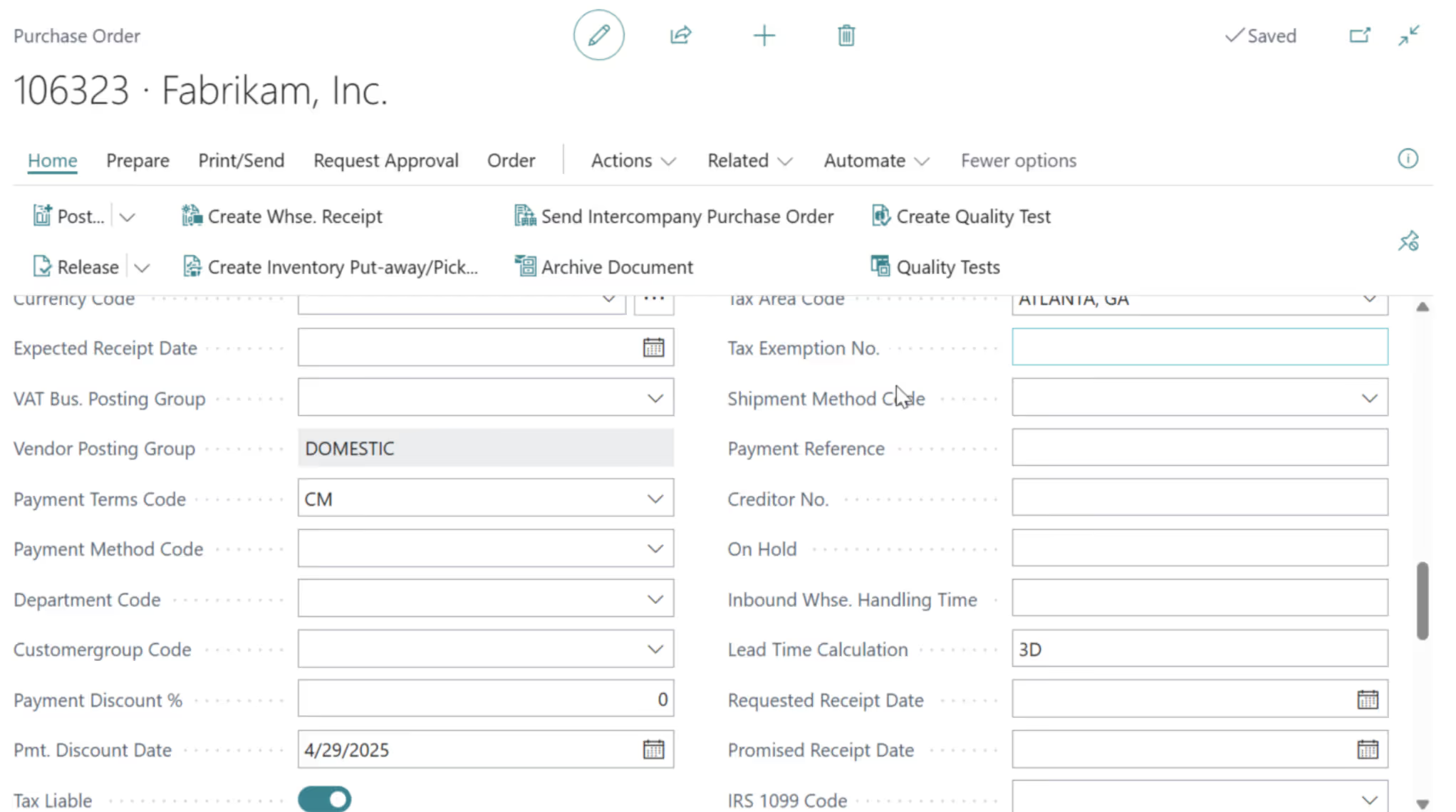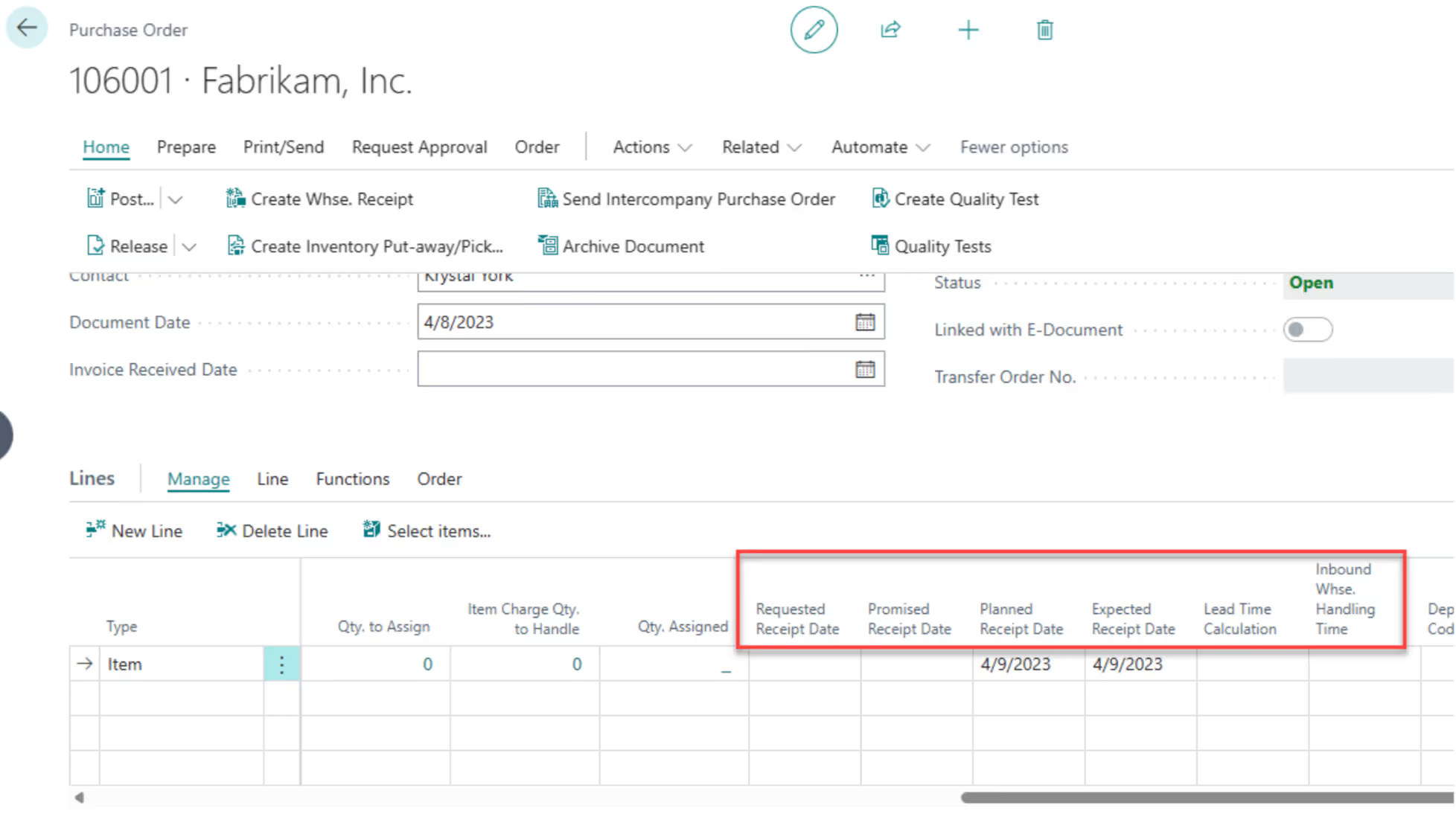
Understanding Microsoft Dynamics 365 Business Central’s Purchase Order Dates
Microsoft Dynamics 365 Business Central (BC) has multiple date fields that support the tracking, fulfillment and invoicing of a Purchase Order. The Dates are designed to allow you to.
- Schedule the receipt of an Item in time to ship the Item on a Sales Order
- Schedule the receipt of an Item in time to be used on an Assembly or Production Order
- Appropriately create the Purchase Invoice with an Invoice Date, Due Date and Payment Discount Date
- Track the Vendor’s delivery performance.
The purchase order header and purchase order lines have most of the same date fields. The dates on the header are for (a) tracking the Purchase Order overall and driving dates when the order is posted, and (b) used for the convenience of defaulting information on the purchase order lines when new lines are added. The dates on the purchase order lines are predominantly used for the planning and receipt of that line.
Purchase Order Header
The following dates on the Purchase Header are primarily used for accounting processes:
- Order Date: Date the Purchase Order was created. This field automatically populates at the time an order is created and defaults to the work date in the system.
- Posting Date: Date to be used on Ledger Entry tables to indicate when an order is received and invoiced. In order to post to this date, the date needs to be open in either the G/L setup or user setup.
- Document Date: Date used to automatically calculate the payment Due Date. This date has no use or meaning until posting. This date defaults to the same date as the Posting Date but can be overridden if the Due Date should be calculated on a date different than the posting date.
- Due Date: Date that the payment of the order will be due. This date is calculated by adding the payment terms to the Document Date field.
- Payment Discount Date: This is the date that payment must be made in order to earn the payment discount. This date is populated by adding the payment discount date calculation to the Document Date. The following fields are used for planning and for defaulting the values to the same field in the line:
- Requested Receipt Date: Date goods have been requested to be delivered to the specified location. This date will be blank unless you populate it and will default to the lines when created
- Planned Receipt Date: Date that the goods are expected to be received based on the Vendor’s lead time if that is filled in. The Planned Receipt date is calculated by adding the vendor lead time to the PO order date. If there is no lead time for the vendor, the planned receipt date will be the same as the PO order date.
- Promised Receipt Date: Date vendor initially committed to deliver goods.
- Expected Receipt Date: Date the goods should be available in the storage location. BC adds the INBOUND WAREHOUSE HANDLING TIME to the Promised Receipt Date to set the Expected Receipt Date, which is the date the goods are available for orders. If the Promised Receipt date is not filled in, BC will calculate the Expected Receipt based off the Planned Receipt Date.

Purchase Order Lines
Most of the date fields that exist on the purchase header are also on the purchase line, and they have the exact same meaning and purpose. Once they are defaulted from the header they can be overridden to be unique per line. The tricky part about the date values on the Purchase Order Line is that most of these date fields calculate each other. Only the Requested Receipt Date and the Promised Receipt Date are not recalculated when a purchase order line date field is changed.

- Lead Time Calculation: Amount of time required from order to delivery for this vendor and item. Each item can have this time noted on the Item Card or on the Vendor Item Catalog record; it is used to project and plan timing of order and delivery.
- Inbound Warehouse Handling Time: Time delay between when goods are received and moved to inventory. Automatically included if set on the Location card or setup globally on the Inventory Set Up. This can also be manually entered on the order.
